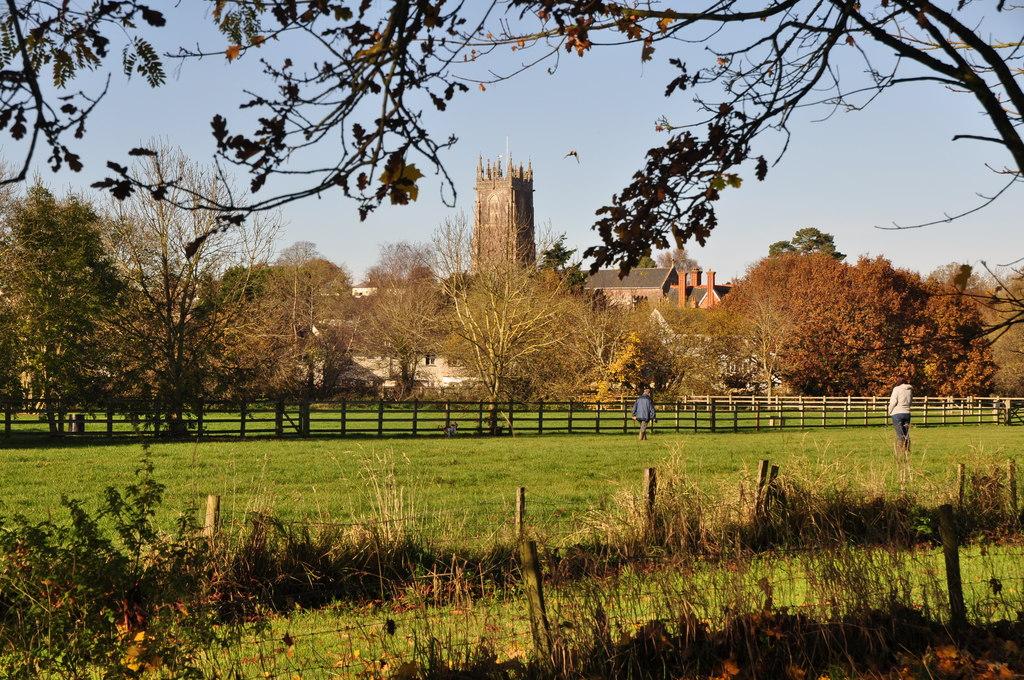St Mary
Kentisbeare, Devon
The chequered tower of St Mary's is striking and unlike any other in Devon.

A church has stood here since Saxon times and the present St Andrew's has had many owners.
Cullompton, Devon
After the Norman Conquest of 1066 it belonged to Battle Abbey in Sussex, then the Priory of St Nicholas Exeter who were the Patrons until the Dissolution of the Monasteries in 1536. The town dates back to the Roman period, there was a fort on the hill above the town and occupation in the centre. ‘Columtune’ was also mentioned in Alfred the Great's will in 872 AD.
The building dates from 1430 and is in the Perpendicular style. It is back from the main street but is still a landmark. The tower is local red sandstone with carved Beer and Ham Hill stone, 100 feet tall with pinnacles rising a further 20 feet.
Inside a gloriously original wagon roof coloured in blue, crimson and gold runs the entire length of the church, with a carved boss at every intersection. The whole structure rests on brackets with standing angels. The chancel section was recoloured and gilded in 1859, when iron tie rods were inserted by William Froude, a Great Western Railway engineer thought vibration from the railway could affect the structure.
The medieval rood screen is one of the longest in Devon. The rood beam has curved ends with half figures of a boy and girl. The Golgotha once stood in the centre of the screen, but now there is the Royal Arms of Queen Victoria.
At the end of the nave is a Jacobean gallery with four oak pillars. It dates from 1637 and along the front are sixteen figures, looking rather like Guy Fawkes, but representing the four evangelists and twelve apostles, with St Andrew in the middle. Above the gallery is the priest's squint which enabled the priest to keep an eye on his church from his chamber.
Lane's Aisle was built between 1526 and 1529. It is well known for its elaborate fan vaulting and is possibly one of the last Chantries built before the Reformation.
St Andrew’s is unique in England, and possibly Christendom, in possessing the original carved wooden base of the medieval rood. It is sometimes called the ‘Golgotha’ because it is carved with skulls, rocks and crossbones. How it escaped destruction during the Protestant Reformation is unknown. It is at least 500 years old and is thought to be the only remaining one in the country and possibly the world.
St Andrew’s is a vibrant Anglican church in the heart of rural Devon. If you’re interested in finding a lively, friendly, welcoming, community, it could be the place for you!
Kentisbeare, Devon
The chequered tower of St Mary's is striking and unlike any other in Devon.
Plymtree, Devon
The manor of Plymtree predates Domesday, the present church of St John the Baptist dates from 14th century and replaced a much earlier structure.
Uplowman, Devon
A small parish church set in the beautiful, rural Devon landscape.